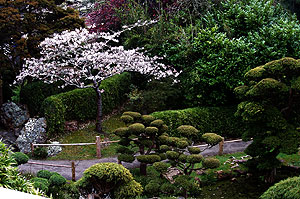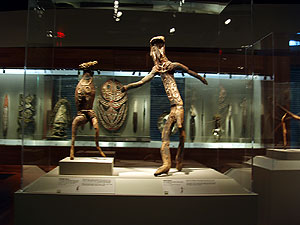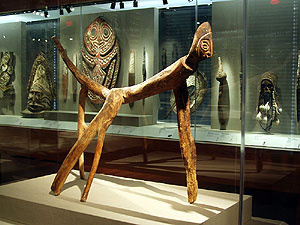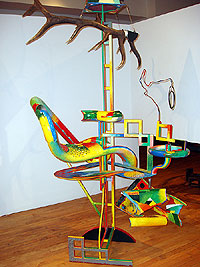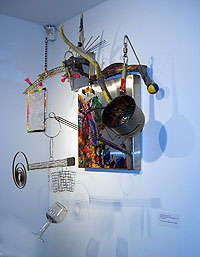Alexander Calder's Inventive Influence

I went to the San Francisco Museum of Modern Art last weekend to see the "Surreal Calder" show. I had seen the big centennial Calder show there in 1998, so this trip was more like visiting old friends than seeing something new. If you have not seen his work in person, it is definitely worth the trip. The show is up until May 21, and there is a bonus concurrent exhibition of Surrealist photography.
Calder has been a source of inspiration for me for many years. His work has a playful quality. The mobiles for which he is best known are an elegant combination of art, physics, and engineering; compostional balance, for example, is connected to physical balance. By relying on air currents to power them he makes visible the invisible medium that surrounds us (unfortunately, in the museum setting, the "mobiles" don't move).
He also made wire sculptures, a sort of line drawing in three dimensions. His head portraits in wire are especially interesting to see in person because of the way they change as you look at them from different angles.
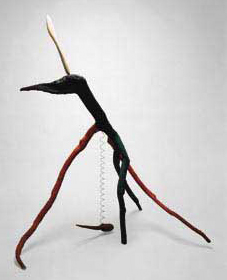 His "surrealist objects" often combine sticks, wood, or stone with biomorphic, amoeboid abstractions. It's interesting to compare the "Apple Monster", shown here, with the "Spirit Figure" in the de Young Museum's New Guinea collection.
His "surrealist objects" often combine sticks, wood, or stone with biomorphic, amoeboid abstractions. It's interesting to compare the "Apple Monster", shown here, with the "Spirit Figure" in the de Young Museum's New Guinea collection. This show also includes a sort of "curiosity cabinet", an alcove containing a selection of objects that he had in his studio, including a large thigh bone, a fish-shaped plate, and figurines.
For more information on Calder, see the Calder Foundation page.
A comprehensive catalog of his work: Alexander Calder, 1898-1976
Also recommended is the 1976 book Calder's Universe
